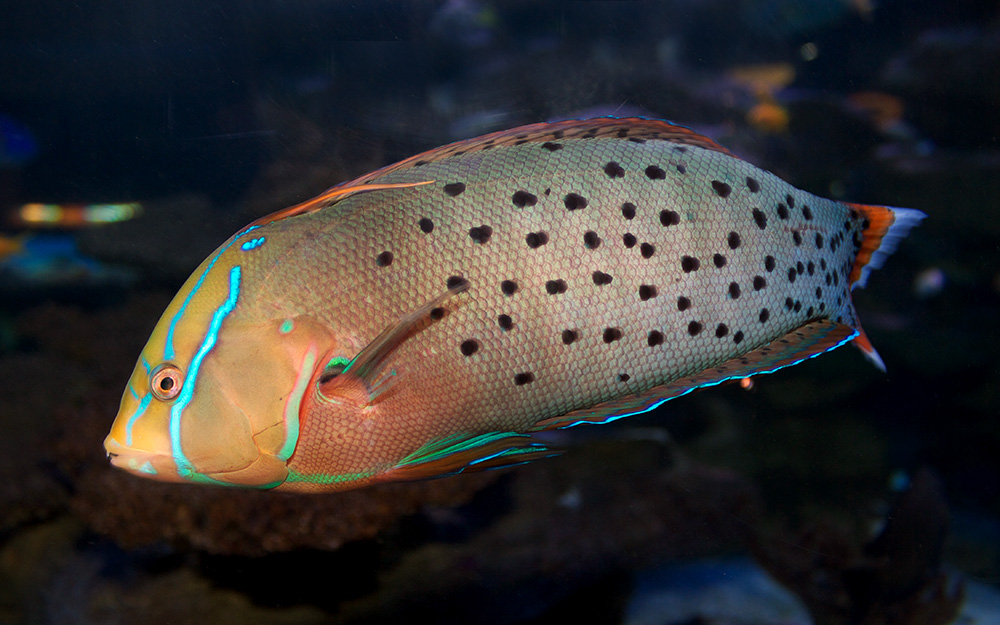Queen coris
(Coris formosa)

Classification
General data
The queen coris (Coris formosa), also known as the sand wrasse, Queen coris wrasse, Formosan coris, Formosa coris wrasse, Formosa wrasse, Indian Ocean wrasse or Indian sand wrasse, is a species of wrasse native to the Indian Ocean from the Red Sea and the coast of east Africa to Sri Lanka. This species appears in the aquarium trade due to its vibrant colors. A special feature about this species is how much they change from juvenile to adult form, in color, behaviour, and diet.
Description
Similar in appearance to its cousin, Coris gaimard, the queen coris can measure between the range of 20cm when young, but can grow up to approximately 60 cm.
Its coloration usually varies within three different patterns. Generally it tends to be reddish to lavender in vibrant, striking color. When in adulthood, the creature appears blue-greenish, with dark edges and dark blue spots, covering the body (mainly towards the tail), with a red-orange line on its posterior margin towards the tail. Towards the rostrum, the adult queen coris will also display vibrant, light blue, organic lines. The fish has nine dorsal spines, twelve dorsal soft rays, and three anal spines. When young, Coris formosa are orange and brown on the bottom, with long white spots on the dorsal part of body. One can see a resemblance to a Clown Fishs color. However, vibrant, blue features develop in adulthood. It is hypothesized that their variation on color depends on the depth at which they are found,[citation needed] but variation mainly results from differences between juvenile and adult stages of growth. Color is a crucial feature for Coris formosa because it is for display purposes; used to attract potential mating partners, and in combative relationships between males. The fish have small protruding teeth for feeding (mostly on hard-shelled organisms).
Distribution and Habitat
Adults of this species are inhabitants of neritic oceanic coral reefs, and can be found at depths from 2 to 50 m (6.6 to 164.0 ft); meaning they are found in tropical waters within 24°C to 27°C. While juveniles are commonly found in tide pools, adults can be found usually in rocky, and coral areas, sometimes in vegitation. The species is distributed along the Western Indian Ocean, Southern Red Sea, South Africa, and east to Sri Lanka.











